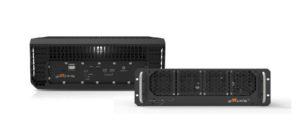Any organization can and should have a plan for Continuity of Operations, or COOP. Well before COVID-19, Hurricane Katrina, 9/11, or any number of tragic events in recent memory, the Federal government developed a COOP initiative. This provided departments and agencies guidance to effectively maintain operations in worst-case scenarios. Comprehensive continuity plans address all facets of operation: essential personnel, delegation of authority, alternate facilities, communication, and more. Logistics rank high in continuity planning, but the technology which enables action can’t be ignored.
For agencies with visualization systems, preparing for interruption in emergency environments prevents loss across many fronts: time, resources, cost, and data. It’s not an overstatement to say a solid COOP plan can mean the difference between life and death in hazardous situations.
The COOP concept is certainly not new. Achieving its goal, however, requires agencies to keep pace with increasingly high-tech solutions. Maintaining uninterrupted operation of video walls and associated communication systems is critical during a domestic, international, natural, or technological threat event.
The impact of COVID-19 presented a unique catastrophe. Unlike the immediate impact caused by localized disasters, widespread lockdowns resulted in a different kind of disruption: absence of personnel. Remote or distributed workflow reduced staffing at operations centers around the world. Even for “essential” agencies, people who could work from home were told to do so. Everyone had to adjust to a new and often limited mode of operation. Visualization platforms designed to facilitate awareness of external situations suddenly became integral to internal workflows as well.
Even in non-critical situations, organizations – private or government – can’t risk downtime. Haivision recognizes the importance of redundancy in visualization platforms and offers multiple approaches to maintain COOP.
Built in Redundancy
The Site Manager device, integrated with the CineNet content management interface, optimizes redundancy. If your video wall processor becomes unavailable, Site Manager enables a video bypass in order to continue displaying and controlling content.


The ability to run mirrored displays provides redundancy and ensures content availability. Identical content is automatically streamed from two processors to specified displays. Only one display is active at a time and the other is kept as a hot backup. By mirroring content between two displays, users can alternate between them when one goes down due to maintenance or hardware failure without loss of usage.
Mobile Visualization
Expeditionary systems provide fast, mobile setup for alternate location command centers. Designed for field operations, ruggedized processors inside transport cases can be quickly mobilized for emergency management if stationary systems are disrupted. Haivision offers a full expeditionary line:

The Stryke and Stryke EX units, which are ultra-mobile, set-up in minutes, and can be carried in a backpack.


